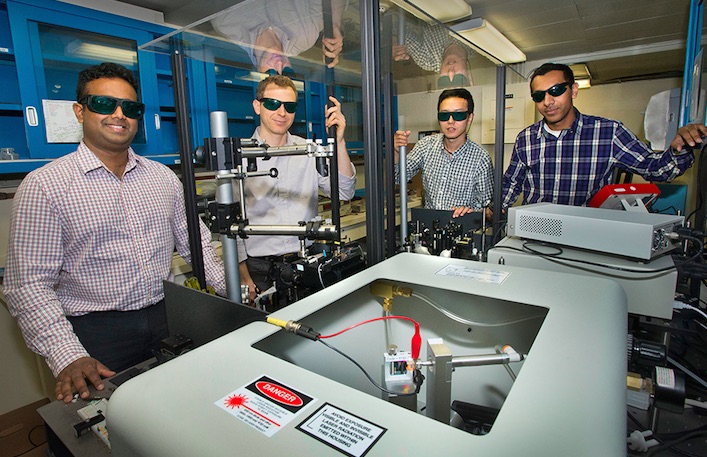Scientists have developed a simple and powerful method for creating resilient, customised, and high-performing graphene: layering it on top of glass.
The scientists created a scalable and inexpensive process that helps pave the way for a new class of microelectronic and optoelectronic devices—everything from efficient solar cells to touch screens. This is important because despite being heralded as a breakthrough “wonder material,” graphene has been slow to leap into commercial and industrial products and processes.
“We believe that this work could significantly advance the development of truly scalable graphene technologies,” said Eisaman, Assistant Professor in the Department of Electrical & Computer Engineering, and lead author of the paper, titled “Spontaneous and strong multi-layer graphene n-doping on soda-lime glass and its application in graphen-seminconductor junctions.”
The study team includes scientists from the U.S. Department of Energy’s (DOE) Brookhaven National Laboratory, Stony Brook University, and the Colleges of Nanoscale Science and Engineering at SUNY Polytechnic Institute. The experimental work was done primarily at Brookhaven’s Sustainable Energy Technologies Department and the Center for Functional Nanomaterials (CFN), which is a DOE Office of Science User Facility.
The researchers built the proof-of-concept graphene devices on substrates made of soda-lime glass—the most common glass found in windows, bottles, and many other products. In an unexpected twist, the sodium atoms in the glass had a powerful effect on the electronic properties of the graphene.
“The graphene doping process typically involves the introduction of external chemicals, which not only increases complexity, but it can also make the material more vulnerable to degradation,” Eisaman said. “Fortunately, we found a shortcut that overcame those obstacles.”













